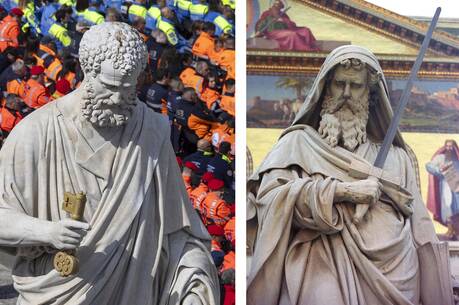Hail, Holy Queen
What can one say about the assumption of Mary? There is no mention of it in the Scriptures. That, of course, does not invalidate the feast. It simply means that its full theological meaning is found outside of the readings selected for its celebration. These readings, however, provide us with insight into the early church’s rich and varied tradition regarding the mother of Jesus.
The cosmic imagery in the first reading is startling in its extravagance, dynamism and reversal. We first see a woman adorned in royal splendor. She cries aloud in labor as her son is born. He is caught up into heaven with God, but she flees into the desert. Applied to Mary, this imagery suggests that she has a place both on earth and in heaven. Clearly her importance lay in bringing forth the child who was “destined to rule all the nations.”
The Letter to the Corinthians states that the risen Christ is “the firstfruits of those who have fallen asleep...in Christ shall all be brought to life, but each one in proper order.” It is only right that Mary should be numbered among those who share in the power of her son’s resurrection. This very feast marks the early church’s belief that the body that bore Jesus was preserved from the physical corruption that will be the lot of all other human beings.
In some circles, devotion to Mary has waned over the recent past. The image of a docile wife and a stay-at-home mother who is dependent upon others for support has lost its appeal. But today’s Gospel paints an entirely different picture of Mary. Though herself with child, she sets aside her own comfort and journeys to the hill country to visit and care for an older relative who will soon give birth. Her prayer is reminiscent of the victory hymns of Miriam (Ex 15:1-18), Hannah (1 Sm 2:1-10) and Judith (Jdt 16:1-17). In it Mary first gives praise to God for according her a dignity that will be recognized by all. She then thanks God for having cared for the lowly and the poor, for having fed the hungry and for having humbled the arrogant.
This is a prayer of praise and thanksgiving and victory. While it is certainly profoundly religious, it is also noticeably political. Mary is concerned with issues of social justice and the future of the nation. She is a self-determined, politically astute and socially sensitive individual, certainly the kind of person modern women would emulate. This feast offers us an opportunity to honor her.
This article also appeared in print, under the headline “Hail, Holy Queen,” in the August 2, 2004, issue.







